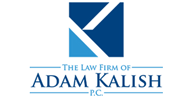People living in densely populated cities like those found in New York are often affected by private nuisance laws in one way or another. Courts have established that a private nuisance is defined as creating or maintaining a condition on one property that results in a compensable injury to someone or something on another property. A private nuisance may interfere with the enjoyment or use of property that results in an injury.
Elements of private nuisance
The Fourth Department Appellate Division of the New York Supreme Court has enumerated the five elements required for finding private nuisance. The interference must be substantial in nature, intentional in origin, unreasonable in character, concerning the property owner’s right to use and enjoy the land and caused by another’s conduct. Additionally, negligent or reckless conduct may be actionable even if it’s not intentional. The language in the complaint differs based on whether the conduct was intentional or negligent.
Understanding private nuisance
Determining whether the nuisance is substantial is typically determined on a case-by-case basis by a jury. The process involves reviewing the circumstances and weighing the rights of the respondent to use their property against the petitioner’s right to enjoy their property.
Analyzing this real estate law often requires weighing the social value of the respondent’s conduct against harm to the private interest. Reasonableness of the interference is a circumstantial question of fact based on how a reasonable person would be affected.
If the nuisance complaint is based on negligence, the elements of negligence will have to be met as well. The elements of negligence include a duty owed from the respondent, a breach of that duty and demonstrating how that breach resulted in an injury. The duty owed is based on the reasonableness of risk perceived from the facts and circumstances of the incident.

